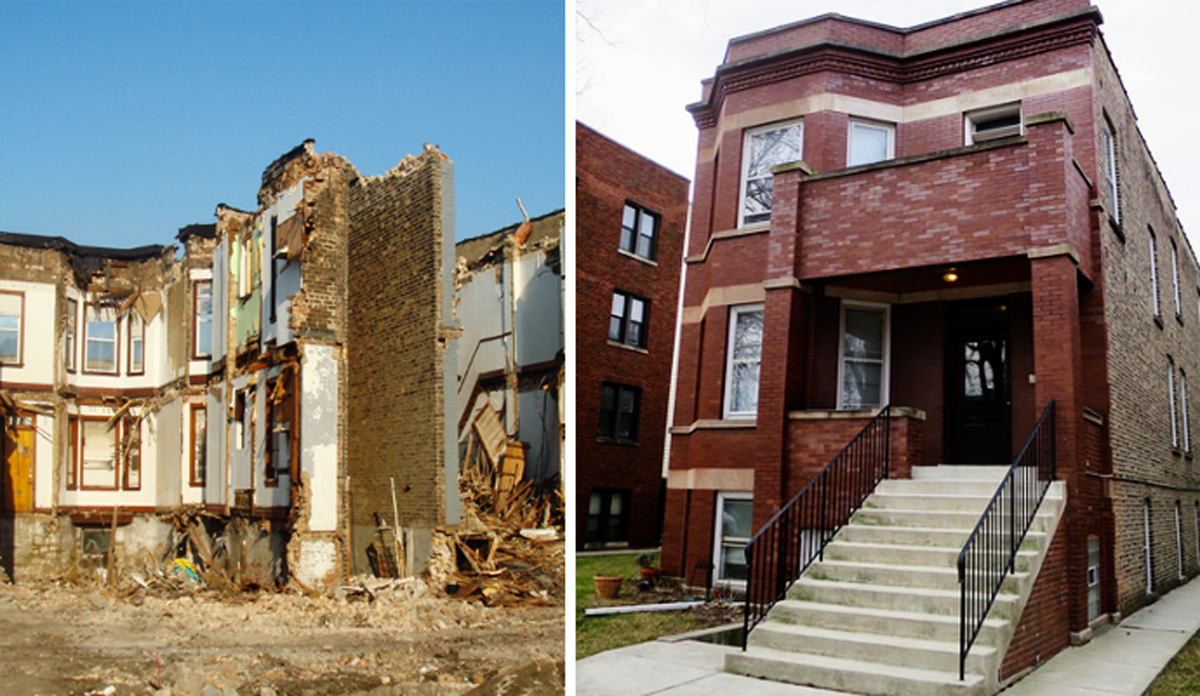Chicago counted almost 3,600 fewer homes in 2016 than it had in 2010, driven almost entirely by a purge of two-flats, three-flats and four-flats.
The city netted a loss of more than 20,000 homes in two- to four-unit buildings during the six-year period, according to data from DePaul University’s Institute for Housing Studies.
At the same time, nearly all of Chicago’s new homes came in the form of large, high-end multifamily buildings. The city netted 24,851 new homes in buildings with five units or more, of which 21,307 were built in census tracts with median home prices above $440,000.
“It’s clear that that two- to four-unit stock is facing a lot of pressure from both ends of the market, as they’re getting demolished in lower-cost neighborhoods and converted to single-family homes in higher-cost neighborhoods,” said Geoff Smith, director of the Institute for Housing Studies.
“It presents a particular challenge when you’re talking about how to maintain affordable housing, because those are the homes that tend to cost less,” Smith said.
The city’s planning department had asked the institute to publish the data as a guidepost for the “Five-Year Housing Plan” announced by Mayor Rahm Emanuel in June. Emanuel resurrected the city’s defunct Department of Housing and asked it to develop long-term strategies to preserve affordability around the city, right after the mayor released a raft of his own proposals on the issue.
The institute’s report was released in three parts, focusing on the city’s demographics, its rental affordability and its homeownership trends. It drew its findings from census data and other survey findings it previously had on file.
The report showed an increasing affordability gap in the city’s rental housing stock between 2012 and 2016, with a nearly 5 percent drop in families earning less than 150 percent of the poverty rate, but a more than 10 percent decline in the number of apartments those families could reasonably afford.
Also among the institute’s findings was a 0.2 percent bump in the city’s population, driven by net in-migration of nearly 23,000 white residents, 18,600 Latinos and 11,700 Asians from 2010 to 2016. But the city lost more than 42,500 African American residents over the same period, accelerating a black exodus from Chicago that’s been underway since at least the 1990s.
The city also netted about 43,000 fewer children under 18 in 2016 than in 2010, although higher-earning families recorded a spike in children under 10.
The report measured an 8 percent decline in the city’s owner-occupied homes between 2006 and 2016 and a 15 percent spike in rental-occupied units over the same period, matching a July RentCafe study that identified the same trend.
Last week, Renthop published evidence that two-bedroom apartment units have become unaffordable for families living in more than half the city’s zip codes.
